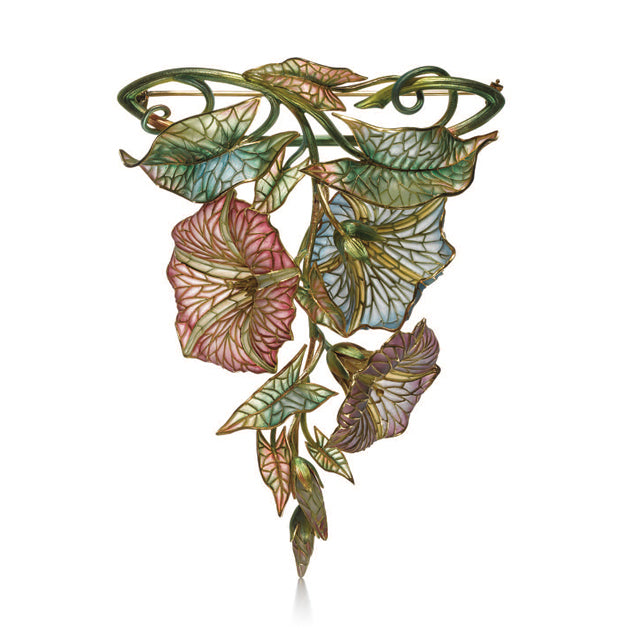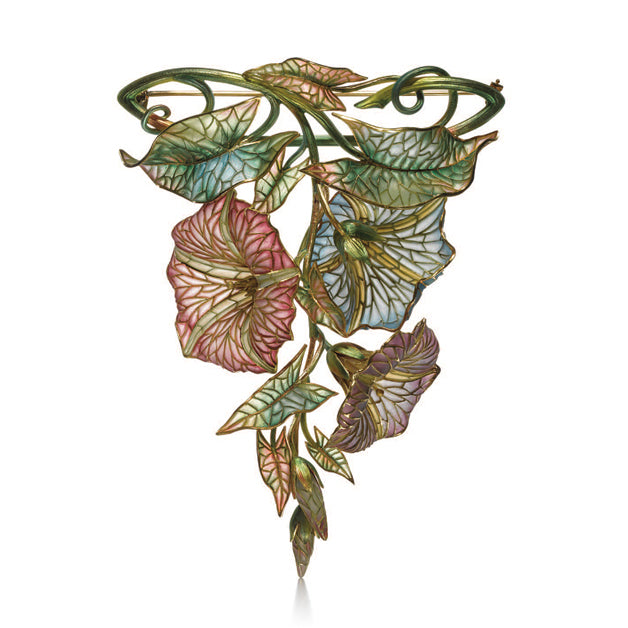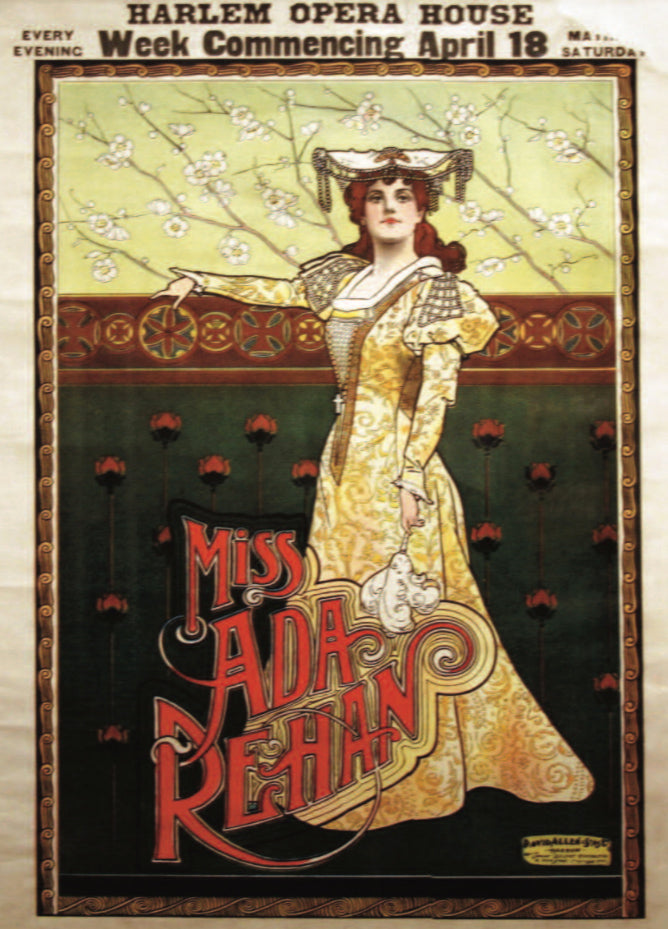GOLD AND PLIQUE-À-JOUR ENAMEL MORNING GLORY PENDANT BROOCH BY MARCUS & CO., NEW YORK, CIRCA 1900
GOLD AND PLIQUE-À-JOUR ENAMEL MORNING GLORY PENDANT BROOCH BY MARCUS & CO., NEW YORK, CIRCA 1900
SOLD: Acquired by the Newark Museum
Designed as an articulated morning glory, the petals and leaves applied with various colors of plique-à-jour enamel, the branches applied with translucent green enamel, together with a pale green enamel link chain, with original fitted case with section underneath for the necklace; mounted in 18-karat yellow gold
- Signed “Marcus & Co.”
- Brooch: 4 x 3 inches; necklace length: 18 1/2 inches
Additional cataloguing
Provenance
- Ada Rehan
Literature
- cf. Becker, Vivienne. Art Nouveau Jewelry. New York: E. P. Dutton, 1985, p. 185, no. 281.
- Karlin, Elyse Zorn. International Art Jewelry 1895–1925, privately published exhibition catalogue, cover and p. 10.
- cf. Tennenbaum, Suzanne, and Janet Zapata. The Jeweled Garden: A Colorful History of Gems, Jewels, and Nature. New York: The Vendome Press, 2006, p. 54.
Exhibition
- International Art Jewelry 1895–1925, The Forbes Galleries, New York, New York, October 29, 2011–March 17, 2012.
Biography
One of the most important American jewelers at the turn of the century, Marcus & Co. created innovative gem-set and enameled pieces that rivaled those of Tiffany & Co. After emigrating from Dresden, Germany, in 1850, Herman Marcus worked for Tiffany & Co. before partnering with Theodore B. Starr to form Starr & Marcus in 1864. In 1884, he joined his son, William, and George Jaques in Jaques & Marcus, which became Marcus & Co. in 1892. When Herman passed away in 1899, his two sons continued the business. Herman’s second son, George, designed artistic Art Nouveau jewelry featuring plique-à-jour enamel, American freshwater pearls, and black opals mined in Australia. During the 1920s, they offered important gemstone jewelry in the Art Deco style. Two years after participating in the 1939 World’s Fair in New York, Marcus & Co. closed their doors.
Significance
The plique-à-jour enameling technique has traditionally been associated with French jewelers, most notably René Lalique. There were just a few practitioners in America to undertake the process, such as Riker Brothers and Whiteside & Blank in Newark and Tiffany & Co. and Marcus & Co. in New York. In traditional enameling, a thin coat of powdered glass is applied to the surface of metal while in plique-à-jourenameling, open spaces are filled with translucent colors that, when fired, give the effect of stained glass.
Most American jewelry with plique-à-jour enameling is flat, providing an even surface on which to execute the technique. In contrast, the morning glory petals and leaves on this brooch are three dimensional, making the process much more exacting. Another important characteristic is the gradation in colors with reds becoming pinks on flowers and greens turning from dark to pale shades. Marcus & Co. is the only American company to create jewelry with plique-à-jour enameling on a three dimensional surface.
This remarkable brooch, that can be attached to a complementary link chain and worn as a necklace, was formerly in the collection of Ada Rehan, the popular late-nineteenth-century actress who starred in several Shakespearean plays as well as other stage productions. William Winter wrote in her 1891 biography, “Her physical beauty was of the kind that appears in portraits of women by Romney and Gainsborough—ample, opulent, and bewitching . . . Her acting, if closely scrutinized, was seen to have been studied; yet it always seemed spontaneous.”
Marcus & Co. was noted for their imaginative jewelry from the turn of the twentieth century. Although there is no evidence to accurately determine who was designing the firm’s jewelry at the time, George Marcus was credited as the designer of their jewelry in 1897 at the first Arts and Crafts Exhibition in Boston and again in 1916 at an exhibition at the Rhode Island School of Design in Providence. It was he who, most likely, designed this important example of American plique-à-jour enamel.







